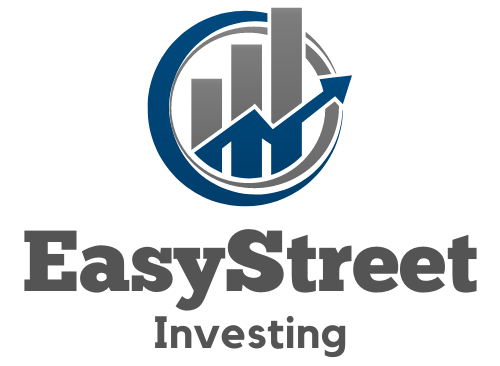In the quest for robust returns, investors often turn to preferred stocks, a hybrid investment offering a blend of equity and debt features. With their fixed dividends and priority over common stock in earnings and liquidation, preferred shares stand out as an attractive option for those seeking steady income streams. This piece delves into the allure of preferred stocks for yield-focused portfolios, providing insights on how they can enhance your investment strategy.
Let’s break down what makes these securities tick. If you’re eyeing high-yield opportunities without wading too deep into risk waters, you’ll find value here. We’ll explore the mechanics behind preferred stocks—their stability in tumultuous markets, potential tax advantages, and how they compare with bonds and common stock. So sit tight; you’re about to uncover why savvy investors are adding preferreds to their financial arsenals, aiming to strike that sweet spot between safety and profitability.
Important Highlights
1. Preferred stocks offer a compelling blend of features for investors seeking steady income streams, as they typically provide higher yields compared to common stocks and bonds. Unlike common stock dividends, which can fluctuate or be suspended, preferred stock dividends are generally more predictable and must be paid before any dividends on common stock.
2. These securities often carry a par value with fixed-rate dividends, making them similar to bonds; however, they also have equity characteristics since they represent ownership in a company. This unique position allows investors to benefit from potential price appreciation while enjoying the security of prioritized dividend payments.
3. Investors are drawn to preferred stocks during periods of low-interest rates because they can serve as an attractive alternative to traditional fixed-income investments like bonds, offering potentially higher returns without excessively increasing risk profiles. The quest for yield becomes more intense when bond returns dwindle, pushing income-focused investors towards preferred stocks.
4. One significant advantage of preferred stocks is their tax efficiency. The dividends received by most preferred shareholders are taxed at a lower rate than ordinary income, thanks to favorable tax treatment that aligns with qualified dividend income. However, it’s important to consult with a tax professional as individual circumstances can vary and affect tax liabilities.
5. Although preferred stocks offer many benefits, they do come with risks such as interest rate sensitivity and lower liquidity compared to common stocks. When interest rates rise, the fixed dividend payouts may become less attractive, leading to possible price depreciation of the preferred shares held by investors. Careful consideration of these risks against the anticipated high-yield rewards is crucial when incorporating preferred stocks into a diversified investment portfolio.
Understanding Preferred Stocks
Preferred stocks are a type of investment that combines features of both equity and debt instruments. They offer fixed dividends, which are typically higher than those of common stocks, making them an attractive option for investors seeking consistent income streams. Unlike common stockholders, preferred shareholders have a higher claim on company assets in the event of liquidation, although they typically do not have voting rights.
Dividend Advantages of Preferred Shares
The dividend yield of preferred stocks is often compared to bonds. These shares generally provide higher yields than common stocks due to their fixed dividend rates. For high-yield seeking investors, this can mean more predictable returns and a better income generation potential. Moreover, some preferred dividends receive preferential tax treatment, which can enhance after-tax returns for investors.
Tax Efficiency of Preferred Dividends
In certain jurisdictions, the dividends from preferred stocks may be taxed at a lower rate compared to bond interest. This tax efficiency can significantly increase the net return for investors in higher tax brackets. The IRS provides guidelines on the taxation of dividend income, outlining how qualified dividends from preferred stocks might be taxed at a favorable capital gains rate.
Risk Considerations with Preferred Stocks
While preferred stocks may offer appealing yields, they also carry unique risks. Interest rate sensitivity is one such risk; as with bonds, the value of preferred shares can decrease when interest rates rise. Additionally, issuers often retain the right to call or redeem these securities before maturity, which can impact expected yields and return projections for investors.
Credit Risk in Preferred Stock Investments
Credit risk is another factor that investors must consider when evaluating preferred stocks. The financial health of the issuing company plays a crucial role in the stability and reliability of dividend payments. A company facing financial difficulties may suspend or even eliminate dividend payments, affecting income-focused portfolios.
Liquidity Concerns and Market Depth
The market for preferred stocks is generally less liquid than that for common stocks or government bonds. This can lead to wider bid-ask spreads and potentially more challenging entry or exit positions for investors. High-yield seekers should weigh these liquidity concerns against their need for consistent cash flows when considering preferred stock allocations in their portfolios.
Balancing Portfolio Diversification
Integrating preferred shares into an investment portfolio contributes to diversification due to their hybrid nature. However, it’s important to balance these holdings with other asset classes to mitigate sector-specific risks and maintain overall portfolio resilience against market volatility.
Incorporating Preferred Stocks with Asset Allocation Strategies
An effective asset allocation strategy involves spreading investments across various asset classes including equities, bonds, and alternative assets like preferred stocks. By doing so, investors gain exposure to different market conditions while potentially smoothing out returns over time.
Evaluating Callable Features in Preferred Stocks
The callable feature is commonplace among preferred issues—allowing the issuer to buy back shares at a predetermined price after a specified date. For investors seeking high yields over long periods, callable features require careful consideration as they may limit long-term income if issuers choose to redeem shares when interest rates decline.
Strategies for Managing Call Risk in Preferred Portfolios
To manage call risk effectively, it is wise to pay attention to the yield-to-call figures rather than just yield-to-maturity numbers. By understanding the terms and conditions associated with an issue’s callability, investors can avoid unexpected losses resulting from early redemptions.
The Role of Convertibility in Preferred Stocks
Sometimes issuers offer convertible preferred stocks that grant holders the option to convert their shares into a predetermined number of common shares. This feature can be particularly beneficial if the issuer’s common stock appreciates significantly in value—providing an upside potential beyond fixed dividend payments.
Navigating Conversion Ratios and Timing Decisions
Determining optimal timing for exercising convertibility options requires monitoring market trends and underlying common stock performance carefully—adding another layer of strategic decision-making for high-yield investors interested in conversion opportunities.
What Are Some Tips for High-Yield Seeking Investors Considering Preferred Stocks?
- Evaluate the creditworthiness of issuing companies to mitigate default risks affecting dividends.
- Analyze interest rate trends since rising rates can negatively affect preferred stock prices.
- Consider tax implications of dividend income according to your specific tax situation.
- Diversify holdings within the asset class to reduce exposure to any single issuer or industry sector.
- Mind callable features and favor non-callable or longer call protection period issues where appropriate.
- Weigh liquidity needs against typically larger bid-ask spreads found in the preferred stock market.
- If choosing convertible preferreds, assess conversion premiums alongside common stock growth prospects.
- Maintain awareness of current and projected economic conditions that could influence your investment’s yield profile.
Frequently Asked Questions
What are preferred stocks?
Preferred stocks are a type of investment that offers features of both stocks and bonds. Investors favor them for their potential to provide steady income through dividends, which often come at higher rates than common stock dividends.
Why do they attract high-yield seekers?
High-yield seekers gravitate towards preferred stocks due to their relatively high dividend payouts compared to other investments. This makes them an appealing option for income-focused portfolios.
How do preferred stocks differ from common stocks?
Unlike common stocks, preferred stocks typically don’t offer voting rights. However, they have a higher claim on assets and earnings, meaning they often get paid dividends before common shareholders in the event of a company’s liquidation.
Are preferred stock dividends guaranteed?
While not guaranteed, preferred stock dividends are generally more stable and reliable than those from common stocks. Companies are more committed to paying these dividends, though they can still be skipped or deferred under certain conditions.
Can you sell preferred stocks easily?
Liquidity can vary with preferred stocks; some may trade frequently while others have less market activity. It’s important to research individual issues for their trade volume and market presence.
Do interest rate changes affect preferred stocks?
Absolutely. Preferred stocks often behave like bonds and can be sensitive to interest rate changes. When rates rise, the value of preferred stocks might decrease, and vice versa.
What tax benefits do preferred stocks offer?
The qualified dividend income from many preferred stocks can be taxed at a lower rate than ordinary income, offering a tax advantage for the investors who receive them.
Is there a risk of losing money with preferred stocks?
All investments carry some risk. The prices of preferred shares can fluctuate, and if sold when prices are down, investors could incur losses. Additionally, in extreme cases such as bankruptcy, preferred shareholders face the possibility of losing their investment completely.
How should one choose the right preferred stock?
Selecting the right preferred stock involves assessing factors like credit ratings, company fundamentals, dividend yield stability, and call provisions. Diversifying your holdings can also help manage risk.
Can preferred stocks decline in value?
Yes, similar to other securities, the market price of preferred stocks can go up or down based on various factors including corporate performance and economic conditions. Investors should be prepared for this volatility.
Closing Thoughts on High-Yield Preferred Stocks
In conclusion, the allure of preferred stocks lies in their blend of stability and profitability which caters well to those seeking higher yields from their investments. While they offer advantages like preferential treatment in dividends and potential tax benefits over common stockholders, it’s vital for investors to understand their unique risk profile including sensitivity to interest rate changes and liquidity concerns. Remembering that no investment is without risk will ensure that one remains vigilant in their investment choices.
The journey into investing in preferred securities should start with thorough research and an understanding of personal financial goals. Whether building consistent income streams or diversifying an investment portfolio away from market volatilities associated with common equities, high-yielding preferred stocks hold an undeniable appeal. As always, balancing this attraction with prudent risk assessment will guide investors toward making informed decisions in pursuit of financial growth.

